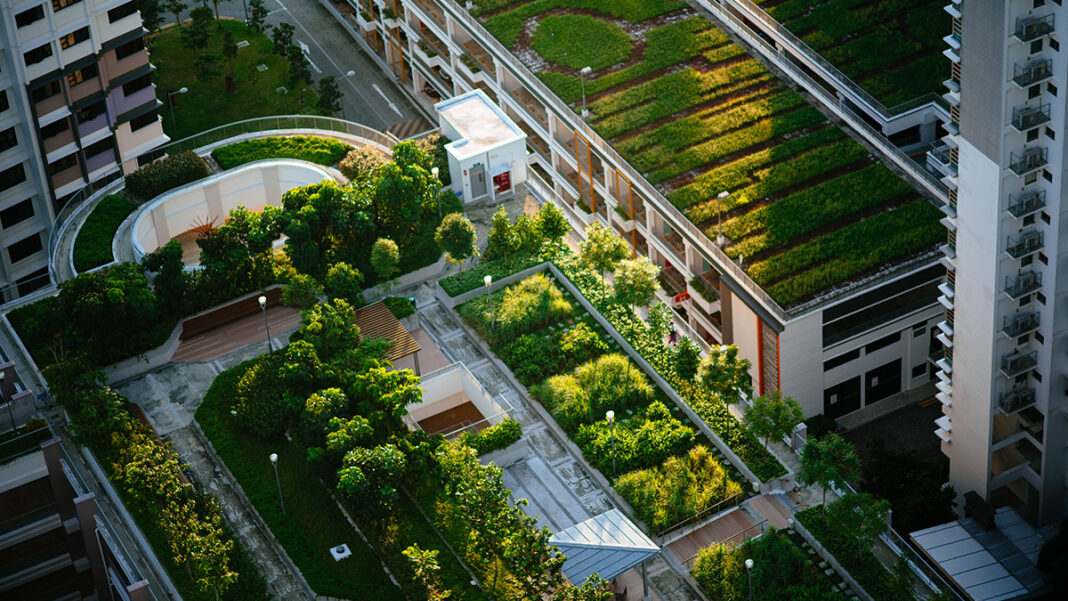As one of the cheapest, most durable, and most abundant materials on the planet, cement has always been the go-to choice of the construction industry. Everywhere you go, you’ll find buildings made of cement, homes made of cement and government facilities made of cement. This isn’t surprising knowing just how versatile cement is. Aside from its durable, rust-free, and fire-proof, cement has the longest lifespan among other building materials.
But unbeknownst to many, cement production is the leading source of carbon dioxide in the world. Cement is the second most consumed material on the planet. Its production is also responsible for six percent of global C02 emissions, with around 2.8 gigatons of emissions each year.
Researchers, for ages, have been trying to find a better material for production than cement that would make building materials more eco-friendly but so far are unable to recreate cement’s durability. There is just no material that can mimic concrete’s thermal quality, flexibility, and permanence. Until now…
How Living Concrete Was Made?
Funded by Darpa, Department of Defense’s research arm, scientists created what they call “Living Concrete”. Basically, concrete with added cyanobacteria and nutrients. Researchers found a way to make the material as durable as concrete-based mortar. Through a scaffold made of sand (acts as support) and hydrogel (gives moisture and nutrients), the bacteria grows and proliferates.
In a way, the bacteria is alive inside and is what keeps the concrete from degrading. It remains “asleep” but can be stimulated through nutrients and sand. This biomineralization is similar to how seashells are formed in the ocean.
Aside from its strength, it also “grows” through its self-healing ability. In an experiment done in the lab, they split one brick made from the living concrete, and in time through the help of sand, hydrogel, and nutrients, it grew into another two complete bricks. In seven days, the bricks reproduced producing eight in total. So, one brick can produce and create eight more.
This weird concrete is a “new and exciting class of low-carbon designer construction materials” said Andrea Hamilton, concrete experts from Scotland. Unlike traditional concrete which is simply a mix of water, sand, and cement, this new concrete uses cement, sand, bacteria, and hydrogel. It’s basically a green building living material that has a similar strength to cement.
The Future of Green Building?
Green building is all about constructing homes and buildings without depleting the resources for future generations. It promotes sustainability and gives value to our limited natural resources on the planet. It’s a protest against the “teardown and replace” mindset that pervades the construction industry of our world today.
Living concrete is one of the solutions to wasteful modern construction. Dubbed as living concrete or even “Franken-Concrete”, researchers believe that it can revolutionize the industry and promote sustainable construction practices that are both cost-efficient for businesses and good for our planet. Imagine future structures that could heal their own cracks, purify the air, or maybe even glow during the night…there’s just so much possibility.
Living concrete is an exciting glimpse of the future of construction. It also offers a different perspective on the traditional cement production process. Head scientist, Wil Srubar who authored the study said: “We already use biological materials in our buildings, like wood, but those materials are no longer alive. Why can’t we keep them alive and have that biology do something beneficial, too?”
As of now, the research needs more studying so the living concrete material can be perfected. Despite its amazing qualities, there are still limitations to the material. Because although it’s strong and can hold the weight of two people standing on it, it still is weaker than modern concrete.
The cyanobacteria also need humid conditions to survive so it might not work in dry environments. Basically, it won’t self-heal or reproduce if it was placed in the desert or just a storage space that’s too dry. The researchers are currently studying how they can make the microbes more resistant to drying out and remaining functional in all types of weather conditions.
Living concrete isn’t available yet, so how can we practice sustainability in construction?
Actually, there are many ways to promote sustainable construction.
First is by using sustainable building materials. For example, instead of opting for traditional cement, why not use green cement? Green cement is a form of cement produced through a special manufacturing process that reduces C02 emissions. Many nations today are already using green cement in construction and it’s something the international community has been pushing for years now.
Another way is by reducing construction waste. Instead of throwing shingles, metal, lumbers, or pieces of drywall, try to recycle them to create new items. For example, you can smelt your metal to create new items. You can also use lumber and wood to convert it to mulch or biomass fuel.










